What is the meaning of Kilim or Kelim?
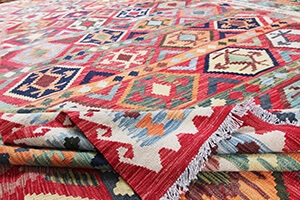
Kilims are outstanding works of human craftsmanship, carrying with them thousands of years of tradition and cultural heritage. Both terms, Kelim and Kilim, refer to the same type of woven oriental rug. The name and spelling can vary depending on the region and language. This phenomenon is not uncommon in the carpet market; for example, Ziegler Oriental rugs were formerly called Chobi carpet before being renamed by Western traders. It is therefore not surprising that carpet dealers in different countries have different names for Kelim and Kilim rugs. It is important to add that there is no difference between Kilim and Kelim rugs. Kilim rugs nowadays are mainly made in Afghanistan, Turkey, Iran and Central Asia. They are made using a special weaving technique that results in a lightweight, thin product that can be used on both sides. Kelim rugs do not have a knotted texture. The design and colour scheme of Kilim reflects cultural and artistic traditions, preserving the heritage and traditions of the carpet making nations. Kilim rugs were originally made by nomadic tribes to keep their tents warm. During their migrations, city dwellers showed an interest in Kilim rugs and exchanged them for food or other items. It became an increasingly desirable decorative item for the city dwellers. After a while, nomadic tribes began to make Kilim rugs for commercial purposes. The weight and versatility of Kilim make them ideal for use as wall rugs or cushion covers. In recent years, Kilim rugs have become extremely popular in the world of interior design. Their striking colours and patterns add elegance and warmth to homes. Kilim or Kelim - both types of rug are precious and timeless.
Kelim rugs - history and origins
The history of Kelim rugs dates back thousands of years and is considered one of the oldest forms of textile manufacturing. The art of weaving developed in the Middle East and Central Asia, where nomadic tribes made rugs for everyday use from wool and natural dyes. Traces of the first kilim rugs date back to the 7th millennium BC, mainly in present-day Turkey, Iran and the Caucasus. Ancient civilisations such as the Sumerians, Assyrians and Persians played an important role in the spread of weaving techniques. Along the ancient Silk Road, traders and travellers brought Kelim rugs to Europe and Asia, ensuring the survival and development of the technique.
In the Middle Ages, kilims became a status symbol in aristocratic households, and their elaborate motifs served to preserve and pass on weaving traditions. Today, the production of Kelim rugs is an important part of the handicraft heritage. In many countries they are still woven by hand, preserving the old techniques and motifs. The unique patterns and colours of kilims carry different cultural and spiritual meanings. Each symbol and geometric design reflects the beliefs, history and social status of a particular community. In making the rugs, the artisans weave their own stories into the weave, making each piece a unique work of art.
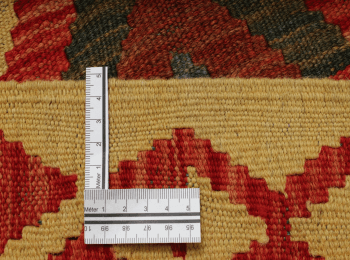
Kelims are still popular today as decorative elements in both modern and traditional spaces.
Their unique appearance and rich historical heritage make them highly prized by decorators and collectors.
Geographical origin of kilim rugs
The geographical origin of kilim rugs is closely linked to the Middle East, Central Asia, North Africa and the Balkans. Weaving techniques and patterns developed in these regions, where nomadic and local tribes adapted these beautiful rugs to their way of life.
Turkey is one of the most important centres of Kelim making, where the tribes of the Anatolian Plateau have passed down their weaving skills through generations.
In Iran, especially among the Persian tribes, kilims were given highly sophisticated patterns and dyes.
In Afghanistan, Kelims were first made by nomadic nomadic tribes to keep their tents warm, until the city dwellers began to take notice of these precious textiles.
Azerbaijan, Georgia and Armenia, in the Caucasus region, are also famous for their Kelim rugs, which often feature intricate geometric designs.
In North Africa, the Kelim rugs of the Berber tribes are famous for their strong colours and simple yet expressive motifs.
In the Balkan region, especially in Bulgaria and Romania, traditional rugs are also an important handicraft product.

Each region has given its Kelims unique stylistic features that make them distinctive in different parts of the world.
Traditional weaving techniques and materials
Kelim production is based on unique weaving techniques that have been perfected over thousands of years. The most common material used by weavers is wool, dyed with natural dyes such as pomegranate seeds or saffron. In addition to wool, cotton is sometimes used to add strength and lustre.
Weaving technique. This is the process of weaving the warp and weft yarns closely together to produce a smooth surface. Weavers often use the 'weft-through' technique, where different coloured threads are alternately woven through the warp threads.
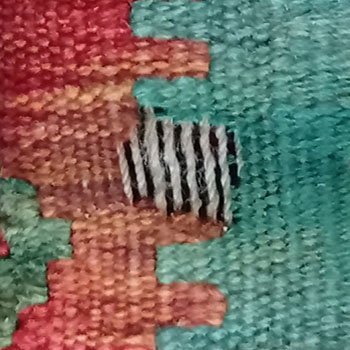
Hand looms: Most Kelims are woven on hand looms, which can be horizontal or vertical. Horizontal looms are common among nomadic tribes, while vertical types are used by urban weavers. The artisans weave the designs freehand, closely following traditional symbols and motifs.
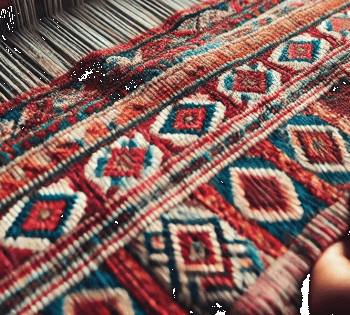
This meticulous craftsmanship ensures that each Kelim rug is a unique and unrepeatable work of art that will be passed down through generations.
How can authentic Kelim rugs be identified?
Identifying authentic Kelim rugs is important for those who want to buy a genuine handcrafted piece. There are many machine-made imitations on the market, so it is worth considering a few key points before buying.
Signs of hand-weaving: original kilims are hand-woven, as evidenced by the unevenness of the yarns, the slight imperfections and the slight asymmetry of the patterns. The backs of hand-woven Kelim rugs are almost as detailed as the fronts.
Material and dyes: Genuine Kelim rugs are made from natural wool and dyed with vegetable dyes. The colours are vibrant but never too bright. Natural dyes become patinated over time, adding to the aesthetic value of the rug.
Motifs and patterns: Repeating geometric patterns, symbols and colour combinations vary from region to region, so it is also worth knowing the origin of the rug.
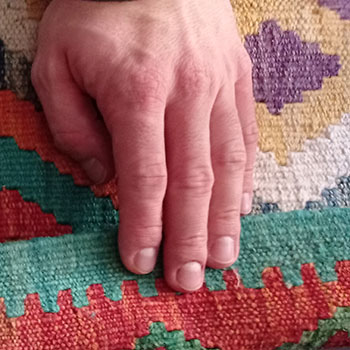
Original Kilim rugs are also valuable as an investment, as they represent an artisanal heritage and will only increase in aesthetic and monetary value over time.
Kelim rugs - cleaning tips
Cleaning and proper care of Kelim rugs is essential to ensure that they retain their beauty and value for many years to come. Here are some tried and tested tips to help keep your rugs looking their best:
Regular cleaning: Kilim rugs should be vacuumed regularly to remove dust and dirt. Use low suction power and avoid vacuuming the edges of the rug.Do not use carpet dusting sticks.
Treatment of stains: If liquid is spilled on the Kelim, wipe immediately with a clean, absorbent cloth without rubbing. Do not use strong chemicals; mild soapy water is best.
Protection from sunlight and moisture: strong direct sunlight can fade natural colours, so it is advisable to keep the rug in a shaded area, under a curtain or to turn it occasionally. Moisture and dampness can also be damaging as they can cause mould and damage the wool.
Professional Cleaning: Every few years or when necessary, it is worth having your kelim professionally cleaned, especially if it is heavily soiled.
Moth protection: It is also worth vacuuming under the rug, especially in summer, to prevent moths from settling underneath, or sprinkling lavender under the Kelim if you are going away for a long period.
Storage: Before folding, it is a good idea to sprinkle lavender leaves or other moth repellent over the centre of the Kelim to ensure freshness and protect the fabric.
Dusting: Don't follow the old tradition of hanging the rug and beating it with a dusting stick. This can damage the weave of the rug.
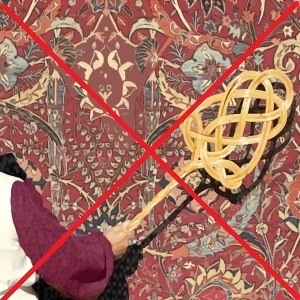
When moving the Kelim, always be careful not to grab the edge of the rug. Avoid pulling on the edges or fringes as this can damage the weave structure and durability of the rug. Grasp the wider part of the rug.
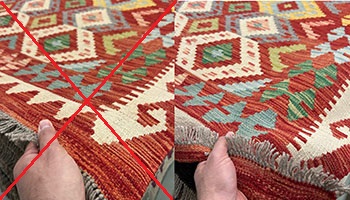
Proper care will help ensure that your Kelim rug retains its original beauty over time, making it a family heirloom for generations to come.
The CarpetDepo Kelim shop is an exceptional place to choose from a wide selection of Kelim rugs. The CarpetDepo Kelim shop offers you a choice of three different types:
- Afghan Chobi Kelim rug
- Modern Indian Kelim rug
- Adarskan Kelim rug
Afghan Chobi Kelim rug is the Customers' Favourite
When it comes to choosing the most popular Kelim rug, the Afghan Chobi Kelim is the top choice. This type of rug features traditional Afghan design elements and natural colours. Chobi means 'wood' or 'woody' in Persian, and these rugs tend to use subdued, earthy colours. They are made using a special weaving technique where every step of the weaving is done by hand. Chobi Kelims are of high quality and extremely durable due to their strong texture. The variety and quality of Afghan Chobi Kelim rugs make them very popular in the carpet market.
The Indian Kelim rug is modern and colourful
Indian Kelim rugs are another remarkable choice if you are looking for something colourful and modern looking. These Kelim rugs are designed with modern patterns and a vibrant colour palette. Indian Kelim is perfect for those who want to bring a little cheer and energy into their home. The modern design and colourful patterns make these Kelim rugs particularly popular with the younger generation.
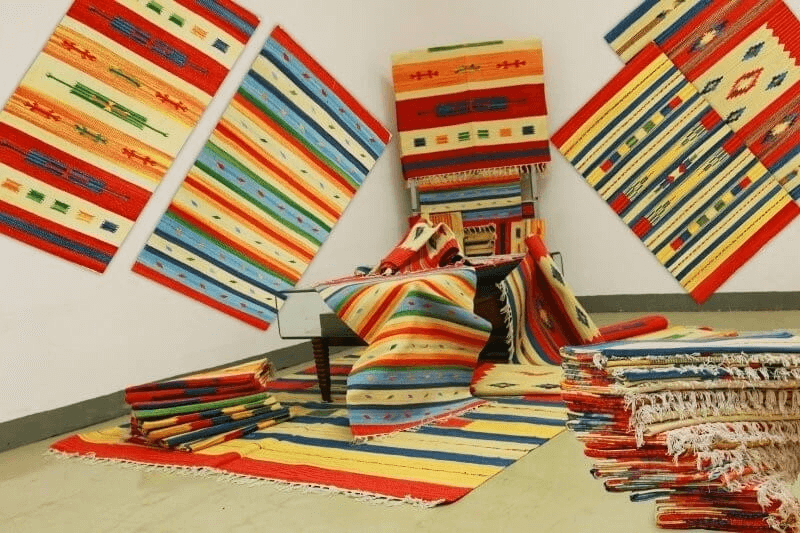
The Adarskan nomadic Kelim rug from Afghanistan
The Adarskan nomadic Kelim is another Kelim rug of Afghan origin, made of wool and hand-woven. This type of rug reflects the Afghan culture and tradition. The Adarskan nomadic Kelim rugs are perfect as wall rugs. Their material makes them extremely durable and easy to maintain.
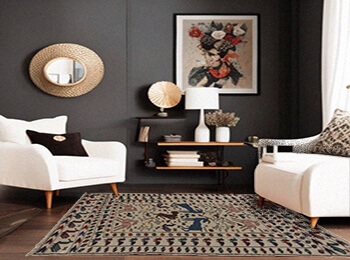
Kelim as Wall hanging rug
All Kelim rugs, whether Afghan or Indian, are perfect for use as wall rugs. The light weight and versatility of this type of rug makes it a great addition to any home decor. Kelim rugs are excellent not only on the floor, but also on the wall, maximising the versatility of the product.
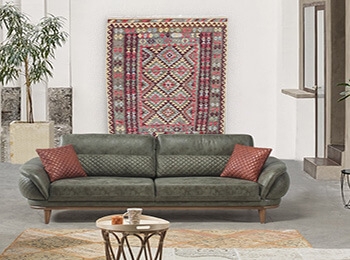
When looking to buy a new rug for your home, it's important to be able to distinguish between the different properties available. For example, you can choose a woven wool carpet or a Kelim rug.
Knotted carpet or woven rug?
Knowing the differences will help you make an informed decision when buying a carpet, so we've summarised the main ones for you. The word 'Kelim' is of Turkish origin and refers to a type of woven carpet that can be used in many different ways. Although Kelim rugs are sometimes included in the general category of 'oriental rugs', they are in fact a distinct type of rug with their own weaving technique and aesthetic characteristics.
The main difference between kelim rugs and knotted wool rugs is in the technique used to make them. In knotted wool rugs, the patterns are created by knotting different coloured wool fibres onto the warp threads, whereas in Kelim rugs, the patterns are created by tightly interweaving coloured weft and warp threads. This technique is called flatweaving and produces a smooth, knot-free surface.

Kelims are often made using a technique called slit weaving, in which small gaps called slits are left where two colours meet. These gaps are not a flaw, but part of the natural and traditional process of making a rug. Weavers carefully juxtapose the weft threads to completely cover the warp threads and use diagonal patterns to reduce any structural weakness caused by vertical gaps.
Kelim rugs are mainly characterised by geometric patterns, but there are also more complex pieces with floral motifs. Another special feature is that most kelims are reversible, having the same pattern on both sides, making them both practical and decorative.
When choosing a Kelim rug, what should you look for?
An important factor to consider when buying a Kelim is price. As mentioned earlier, machine-made kilims are generally cheaper than hand-woven versions because the manufacturing process is faster and synthetic materials are often used.
In contrast, hand-woven rugs are made from 100% natural materials and each piece is unique. Patterns, colours and sizes are not perfectly regular, so no two rugs are exactly alike. It is therefore worth considering how the rug will fit into the design and atmosphere of the room before buying.
Hand-woven Kelim rugs are not only more durable, they are also true works of art that look great
when hung on the wall. Although the price of a hand-woven Kelim may be higher than a machine-made version, it's worth considering the amount of skill and meticulous work that goes into each piece. Such a rug is not only a decorative element, but also a valuable handcrafted product that can adorn your home for decades to come.
We hope you are now more familiar with Kelim rugs. Perhaps you now know more about the Kilim you want in your home!
